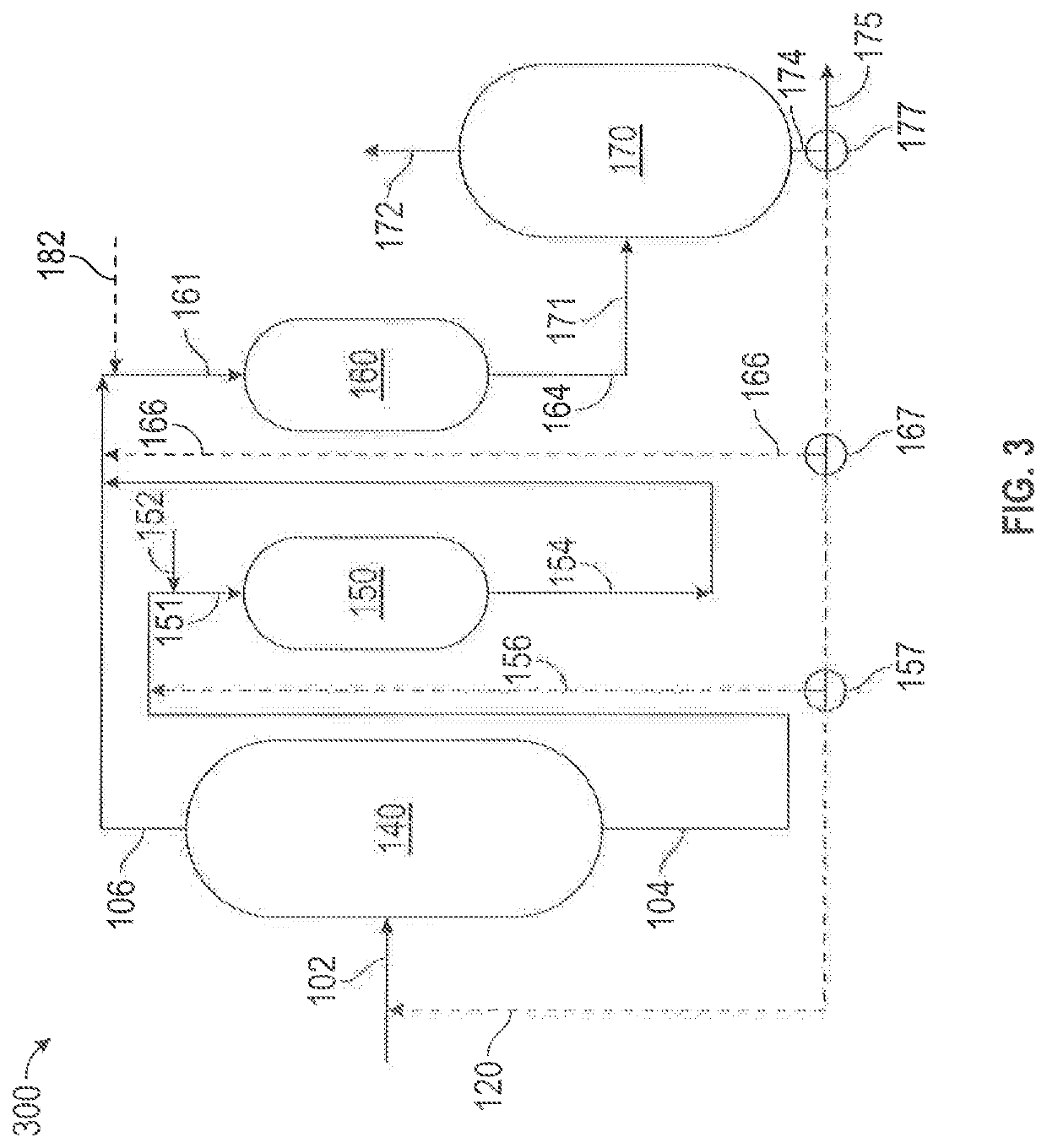Integrated aromatic separation process with selective hydrocracking and steam pyrolysis processes
a technology of aromatic separation and hydrocracking, applied in the field of hydrocracking processes and systems, can solve the problems of reducing the quality requiring costly and energy-intensive processing, and reducing the yield of the middle distillate product, so as to reduce the amount of non-aromatic nitrogen-, the effect of enhancing the removal of nitrogen- and sulfur-containing aromatic compounds
- Summary
- Abstract
- Description
- Claims
- Application Information
AI Technical Summary
Benefits of technology
Problems solved by technology
Method used
Image
Examples
example
Embodiment 1
[0073]A sample of vacuum gas oil (VGO) derived from Arab light crude oil was solvent extracted in an extractor at 60° C. and atmospheric pressure using furfural at a solvent-to-oil ratio of 1.1:1.0 to produce a hydrogen-lean fraction and a hydrogen-rich fraction. The hydrogen-rich fraction yield was 52.7 W % and contained 0.43 W % of sulfur and 5 W % of aromatics. The hydrogen-lean fraction yield was 47.3 W % and contained 95 W % of aromatics and 2.3 W % of sulfur. The properties of the VGO, hydrogen-lean fraction and hydrogen-rich fraction are reported in Table 1.
[0074]
TABLE IVGOVGOPropertyVGOAromatic-RichAromatic-LeanDensity at 15 ° C.Kg / L0.9221.0200.835CarbonW %85.27HydrogenW % 12.05SulfurW %2.72.300.43Nitrogenppmw61558431MCRW %0.13AromaticsW % 47.344.92.4N + PW % 52.72.650.1
[0075]The hydrogen-lean fraction was hydrotreated in a fixed-bed hydrotreating unit containing a Ni—Mo on amorphous silica-alumina catalyst at 150 Kg / cm hydrogen partial pressure, 400° C., liquid ...
PUM
| Property | Measurement | Unit |
|---|---|---|
| pressure | aaaaa | aaaaa |
| temperature | aaaaa | aaaaa |
| pressure | aaaaa | aaaaa |
Abstract
Description
Claims
Application Information
 Login to view more
Login to view more - R&D Engineer
- R&D Manager
- IP Professional
- Industry Leading Data Capabilities
- Powerful AI technology
- Patent DNA Extraction
Browse by: Latest US Patents, China's latest patents, Technical Efficacy Thesaurus, Application Domain, Technology Topic.
© 2024 PatSnap. All rights reserved.Legal|Privacy policy|Modern Slavery Act Transparency Statement|Sitemap



